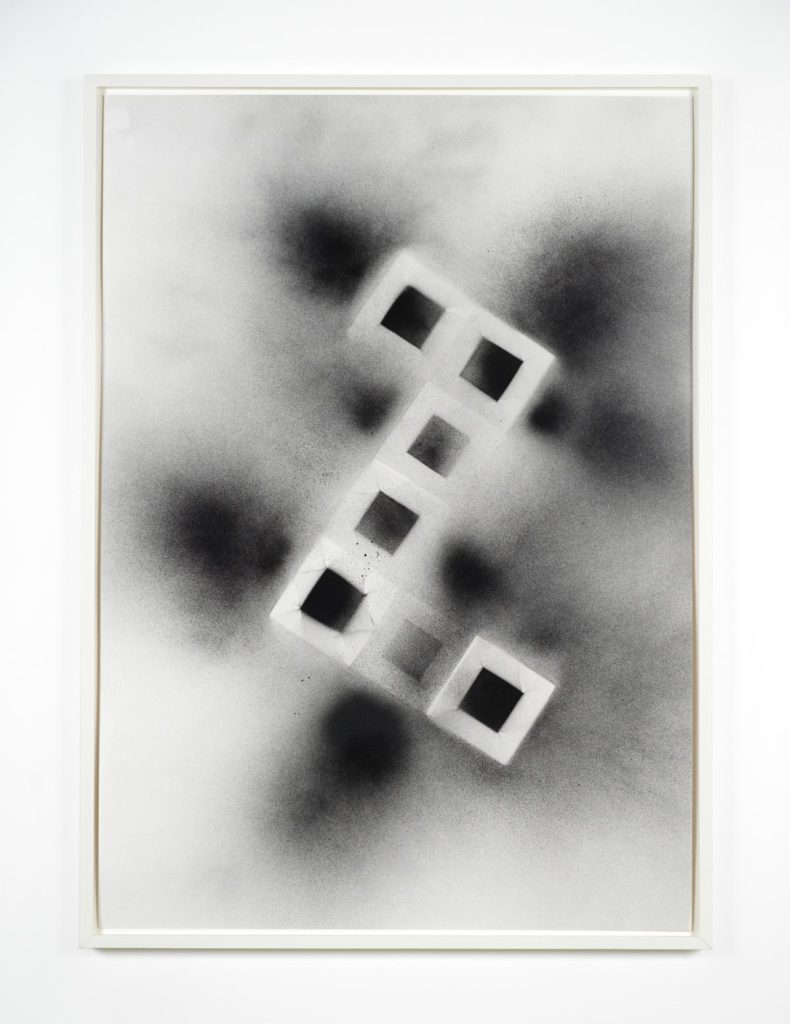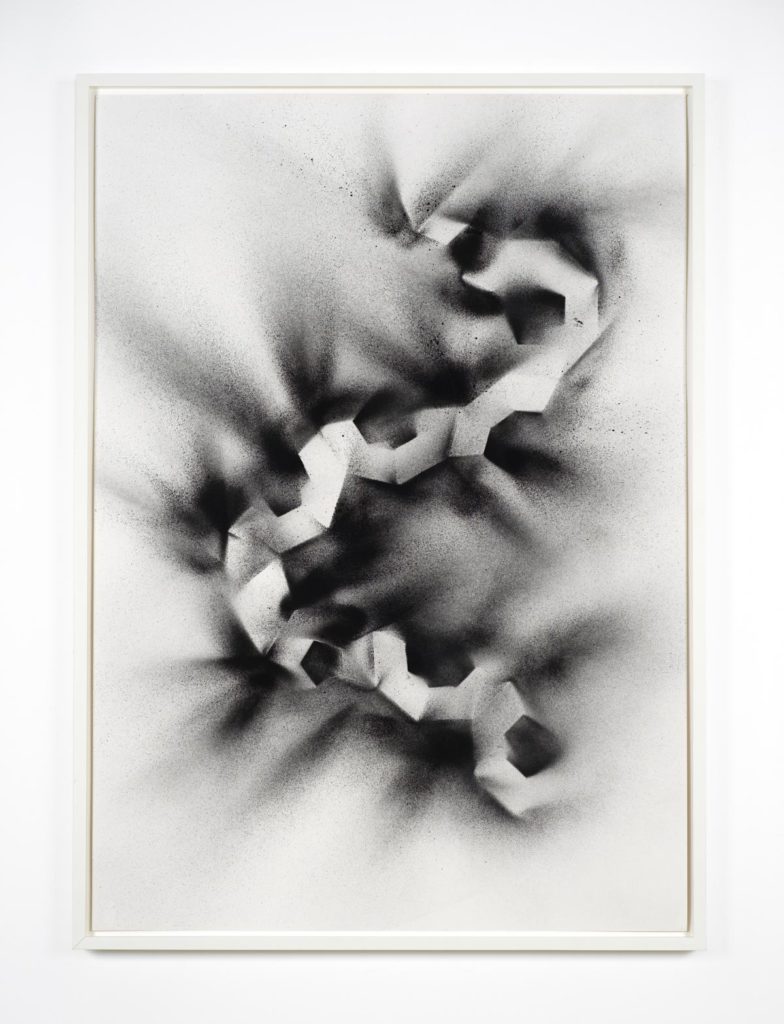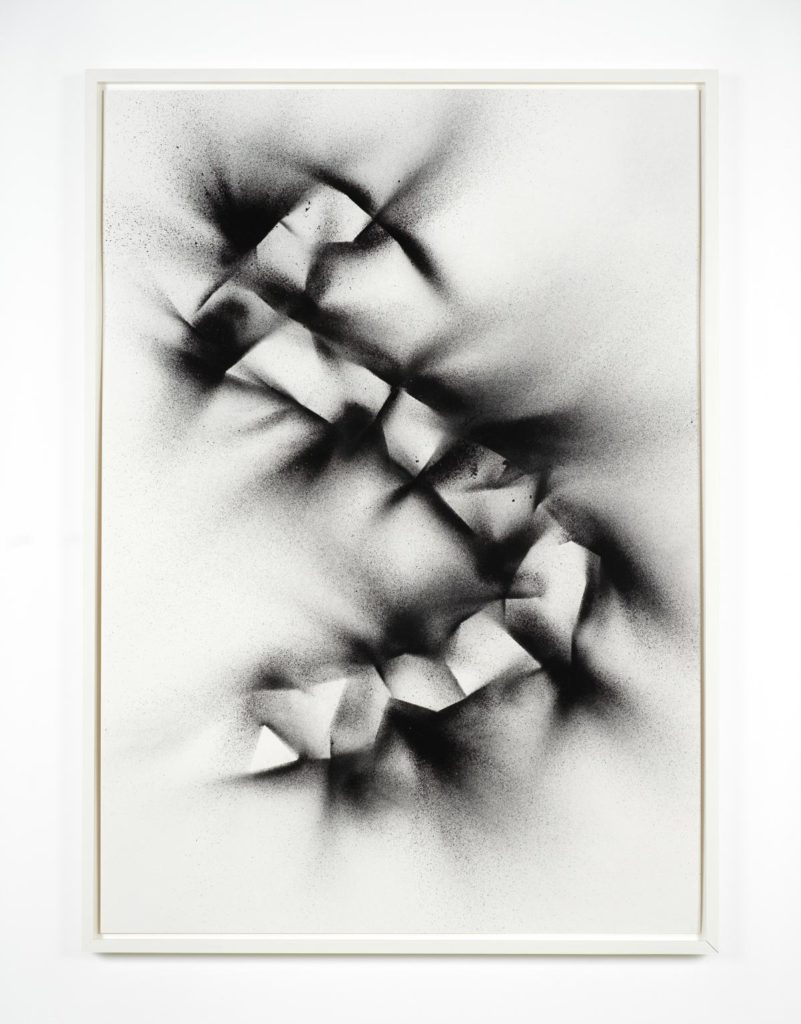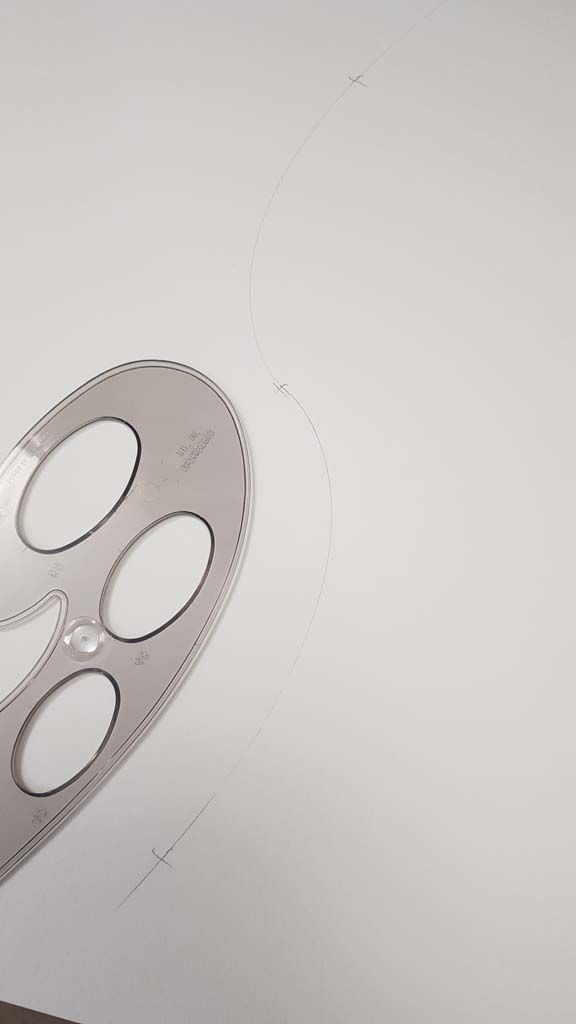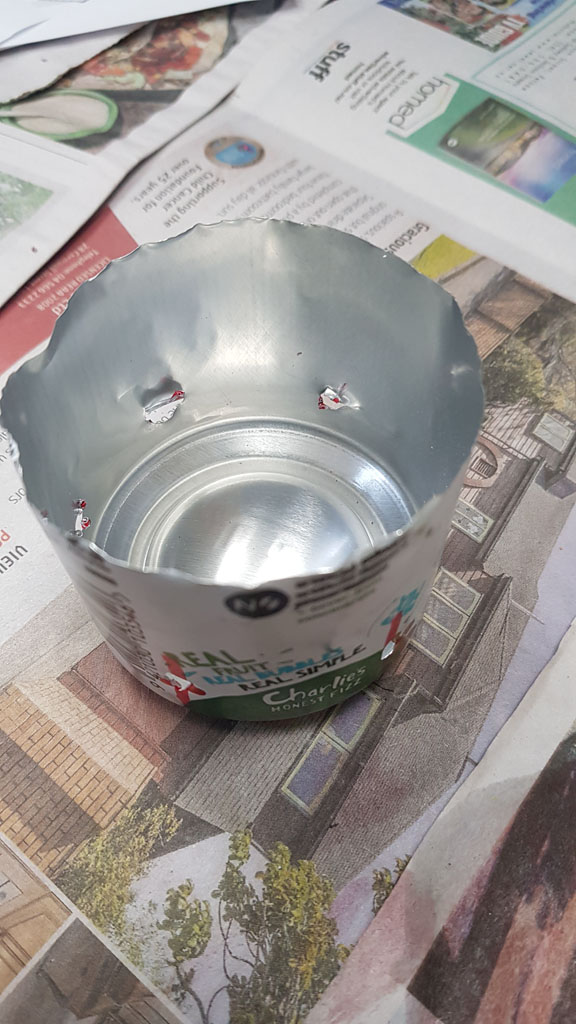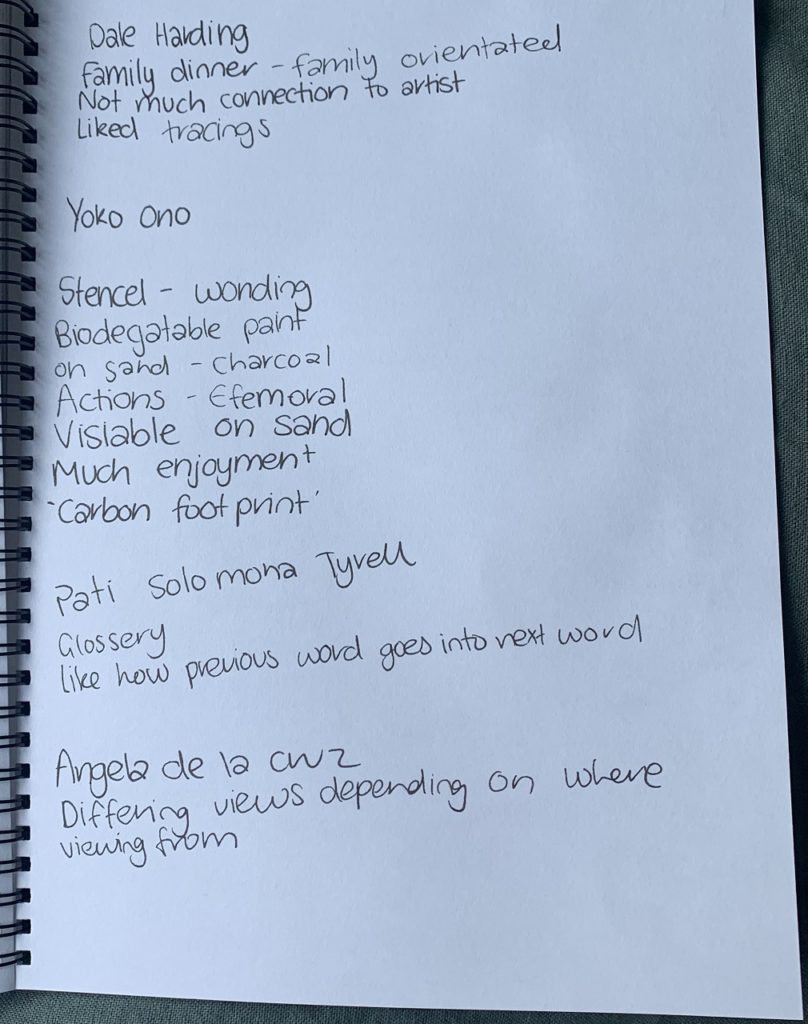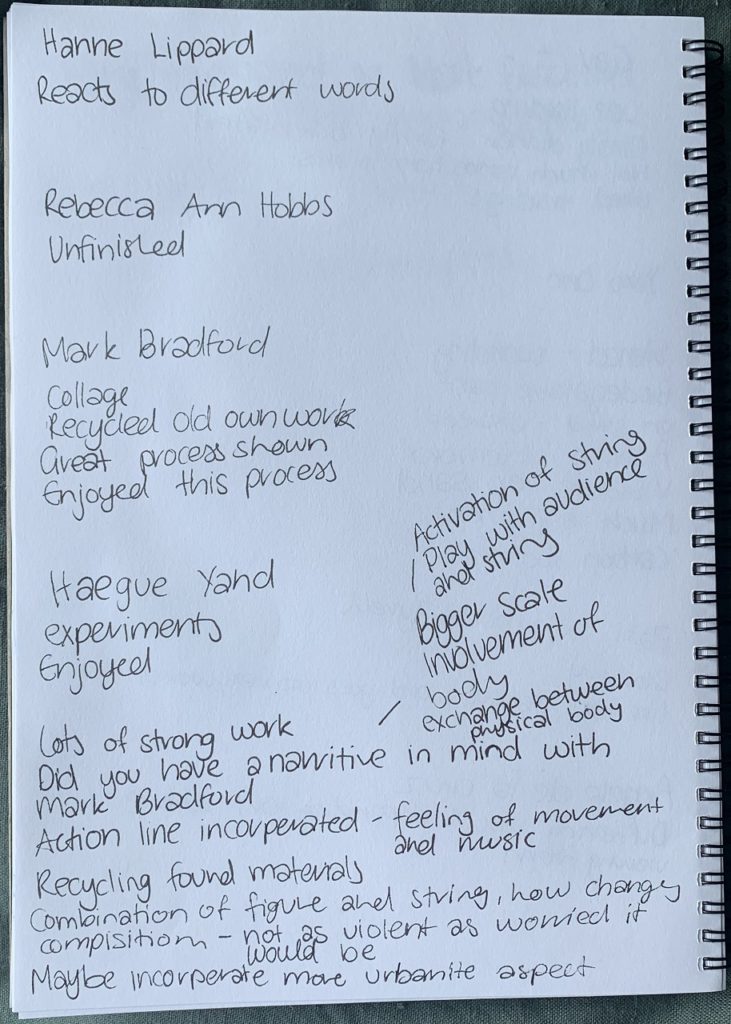213.157 Independent Study Week #8.1
Wiki tua waru, Akomanga tua tahi
Task 1
IND1: Research Hakari and in your own words describe what you find. Also, provide your own reflection on the potential or role of Kai in a celebratory context.Consider this from a Māori, Pākehā or other cultural or personal perspective. 200 WORDS.
Textbook Definitions
Just to have something to riff off, I lifted this from the tutorial PDF.
whakakapi, closing, completion, the sharing of food to whakanoa (lift restrictions / tapu) and demonstrates manaakitanga (host responsibility / support)
Hākari is a process for balancing, settling and replenishing oneself and one’s community or whenua.
It takes the form of a feast, which moves the powhiri proceedings from the formal to the informal, and through that movement cements future relationships.
It is an opportunity for reciprocity and friendly rivalry to enhance the mana of the hosts and guests.
My interpretation
Hākari are usually thought of as “feasts”, and these feasts are imbued with significant meanings of rebalancing and reconciliation. The word can also apply to the wooden structure that food for such a feast was traditionally displayed upon. These feasts were held as a way to offer hospitality to others, and also to show mana. Sometimes the feast hosts competed with their guests to outdo each other. Although originally held to mark events, and as rituals, by the 19th century they increased in size enormously with food being displayed in huge piles. Although hākari have persisted to the present day, these are now typically held at the end of a hui (not longer being the sole reason to gather), and the menu have often become more healthy.
213.157 Independent Study Week #8.2
Wiki tua waru, Akomanga tua rua.
Task
Considering the works of Dale Harding (1) and Yoko Ono (2).
IND: Use the other artist’s method to produce your own work. Document both resulting works and archive into your blog
1st Artist: Dale Harding
https://artguide.com.au/dale-harding-discusses-his-incredible-year/
Some of the works Harding has produced this year are collaborations between Harding and his family …
‘Dale Harding Discusses His Incredible Year’. Art Guide Australia, 28 Sept. 2017, https://artguide.com.au/dale-harding-discusses-his-incredible-year/.
Response

2nd Artist: Yoko Ono
“But at the same time, I immediately thought it’s a good subject for me as an artist,” said Ono. “I wanted to share that feeling I had in my heart with the audience and invite them to participate.”
‘“Protect the Persecuted”: Behind Yoko Ono’s Impactful Refugee Art Project’. The Guardian, 21 June 2019, http://www.theguardian.com/culture/2019/jun/21/protect-the-persecuted-behind-yoko-onos-impactful-refugee-art-project.
Response
My initial idea was a “Grapefruit” or “Acorn” style invitation to carry out an action. I really wanted to have an environmental message in this, so I considered something like this:
- Take a compass and go down to the ocean.
- Look due South from the very edge of the water.
- Consider Global Warming, and how the melting ice at the South Pole is directly linked to the ocean you are standing by
Then I thought about another of Ono’s work:
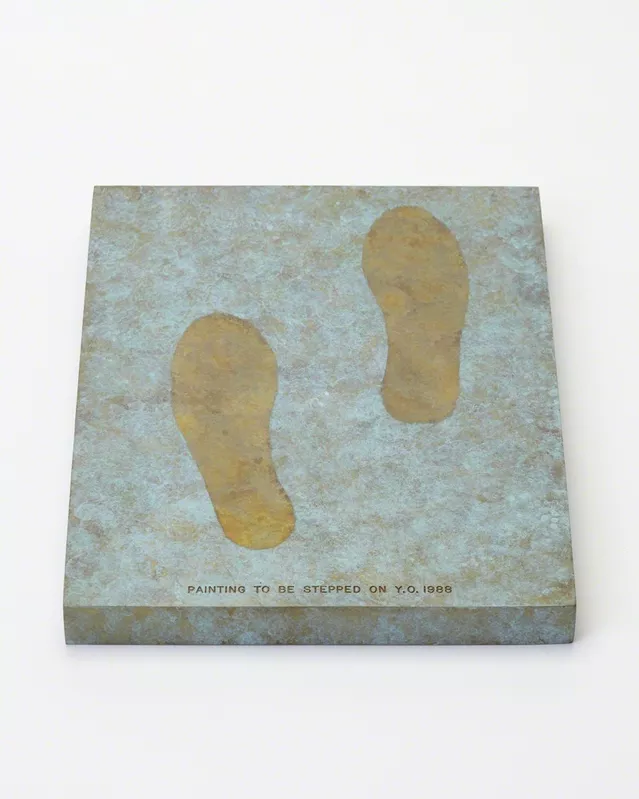
I decided to combine the two ideas. Instead of providing instructions, I would just provide a place to stand, but let people know they were facing South when they were standing there. I would let their imagination do the rest. I made a stencil:
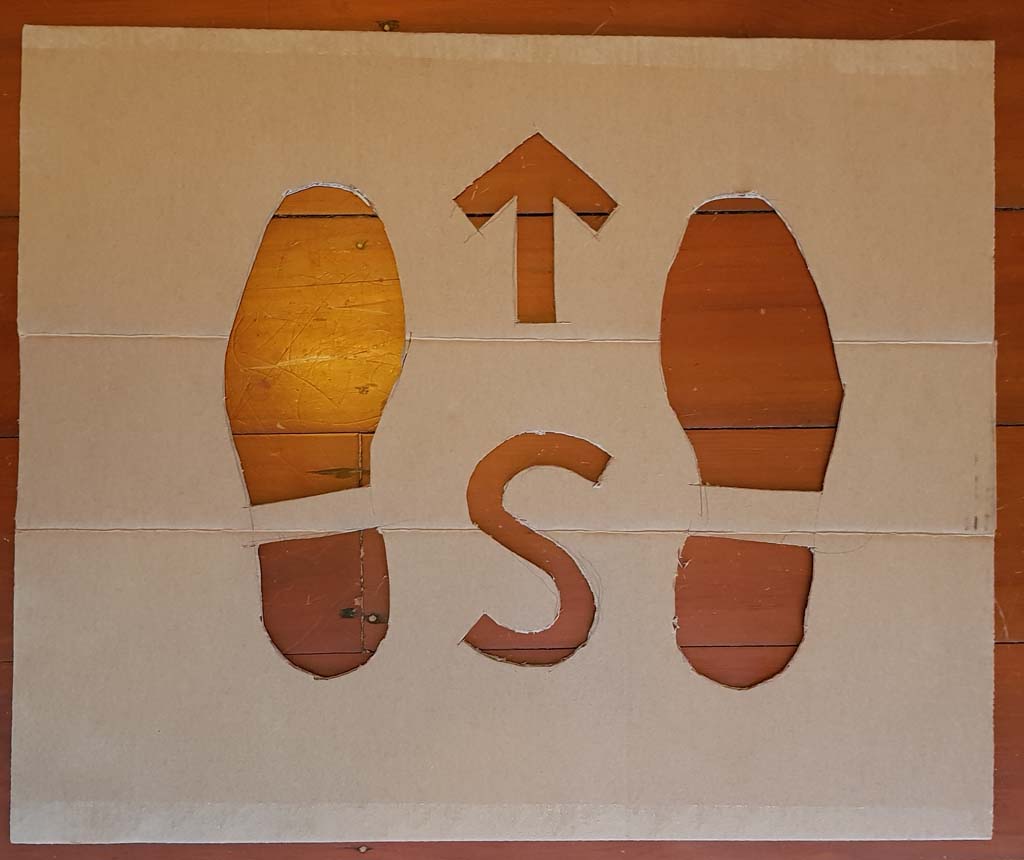
I initially though about applying the stencil to the seawall using biodegradable paint, but when I went down to the beach I had another idea. I wanted to put the footprints directly onto the sand, so that they would be ephemeral. I did not want to do this with paint – it felt like precisely the wrong medium – so instead I took some charcoal from my woodburner and ground it up. I found the effect to be quite striking.
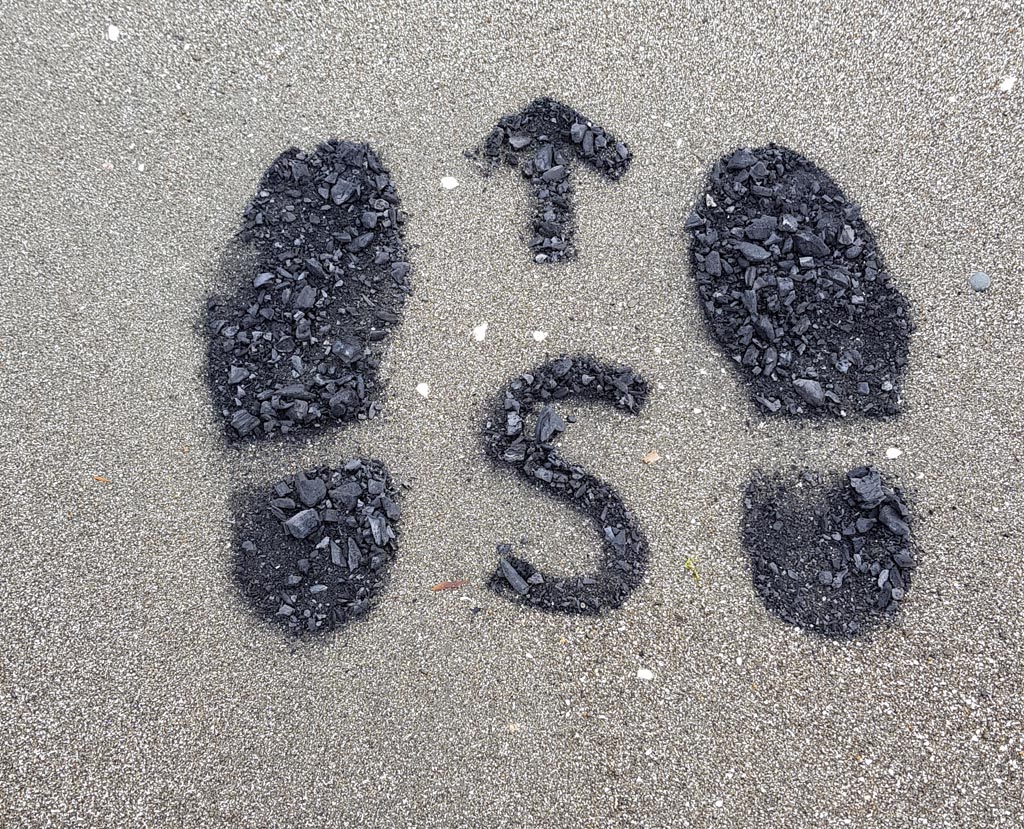
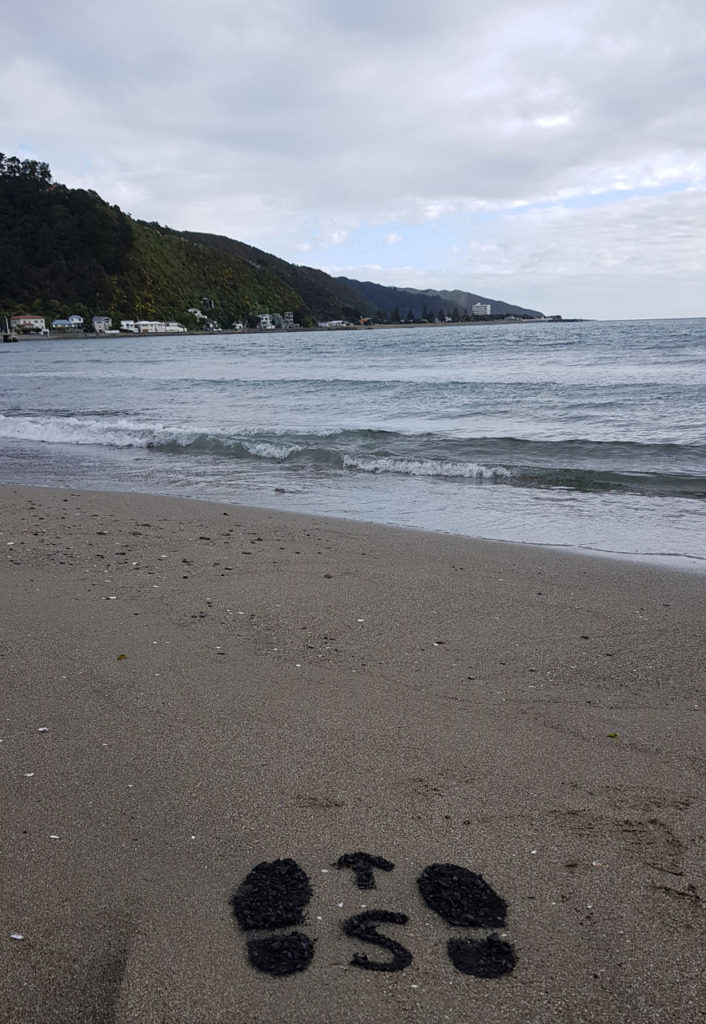
I then realised that standing in the footprints would destroy them. That felt right.
It was genuinely only then that I realised that I’d inadvertently created a “Dad joke”…
213.157 Independent Study Week #9.1
Wiki tua iwa, Akomanga tua tahi
Task
Considering the works of Pati Solomona Tyrell (3) and Angela de la Cruz (4).
Use the other artist’s method to produce your own work. Document both resulting works and archive into your workbook/blog
3rd Artist: Pati Solomona Tyrell
… I was thinking about where we sit in Samoan culture and society, and where we sit as gender-diverse people. I feel like we’re kind of at the bottom, with no power. So I wanted to reverse that, and bring that power back.
These Shapeshifting Photos Reclaim Power for Gender-Diverse Pacific Peoples. https://www.vice.com/en/article/wj7mm5/these-shapeshifting-photos-reclaim-power-for-gender-diverse-pacific-peoples. Accessed 26 Sept. 2021.
Response
Digital work using flocking and fluid motion to spell and re-spell a glossary of LGBTQ+ terms.
4th Artist: Angela de la Cruz
Another thing I’ve always said is that a painting always has to be a painting. Everything must be able to return to its original state and return to being a painting. I think of them like a body with a deformity, or a body missing a leg, but then you put on a prosthetic leg to walk. I also like to think of my paintings like the parable of the prodigal son: whenever they want, they can return.
‘Ángela de La Cruz’. Site-Specific Conversation, http://site-specificconversation.com/en/angeladelacruz/. Accessed 26 Sept. 2021.
Response
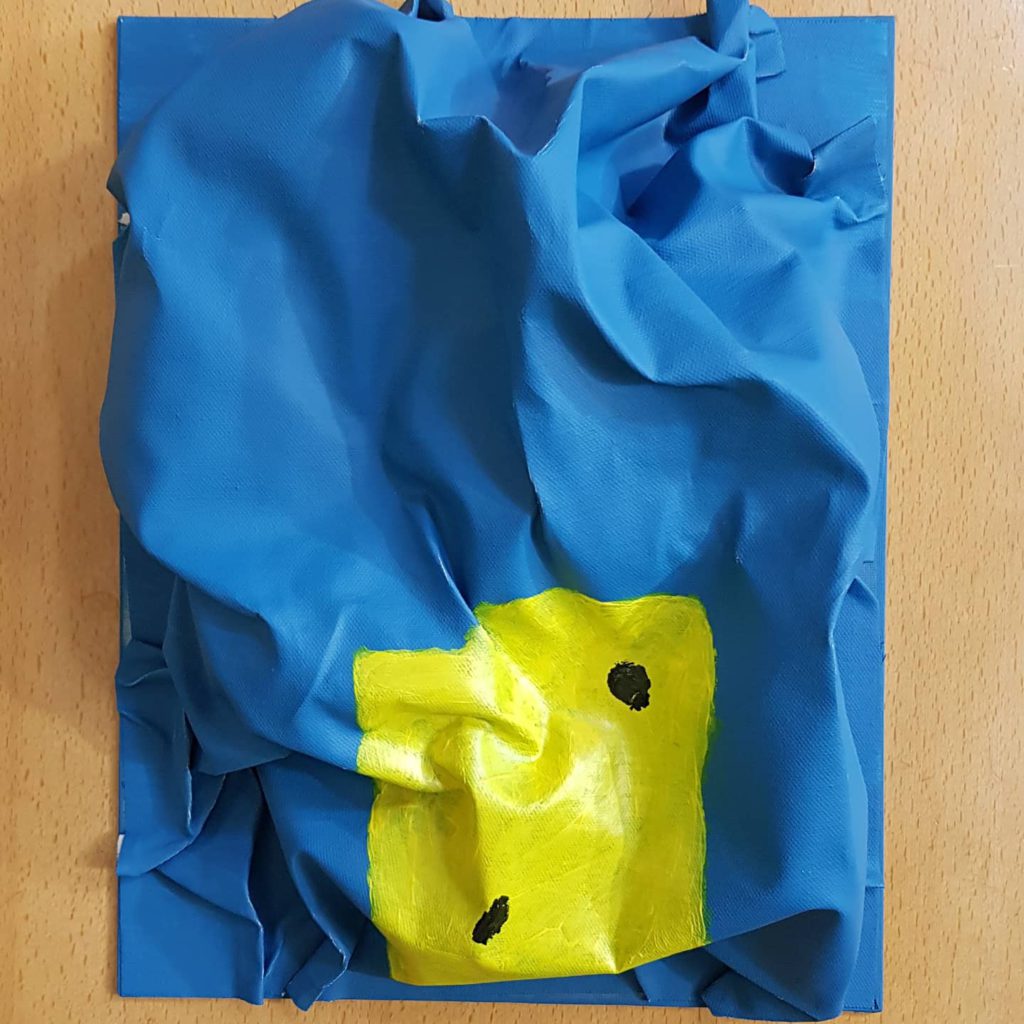
Angela de la Cruz uses humour in her work. After having a stroke she is also living with disability, so, I added something to this piece that would only really be seen if you approached it in a wheelchair:
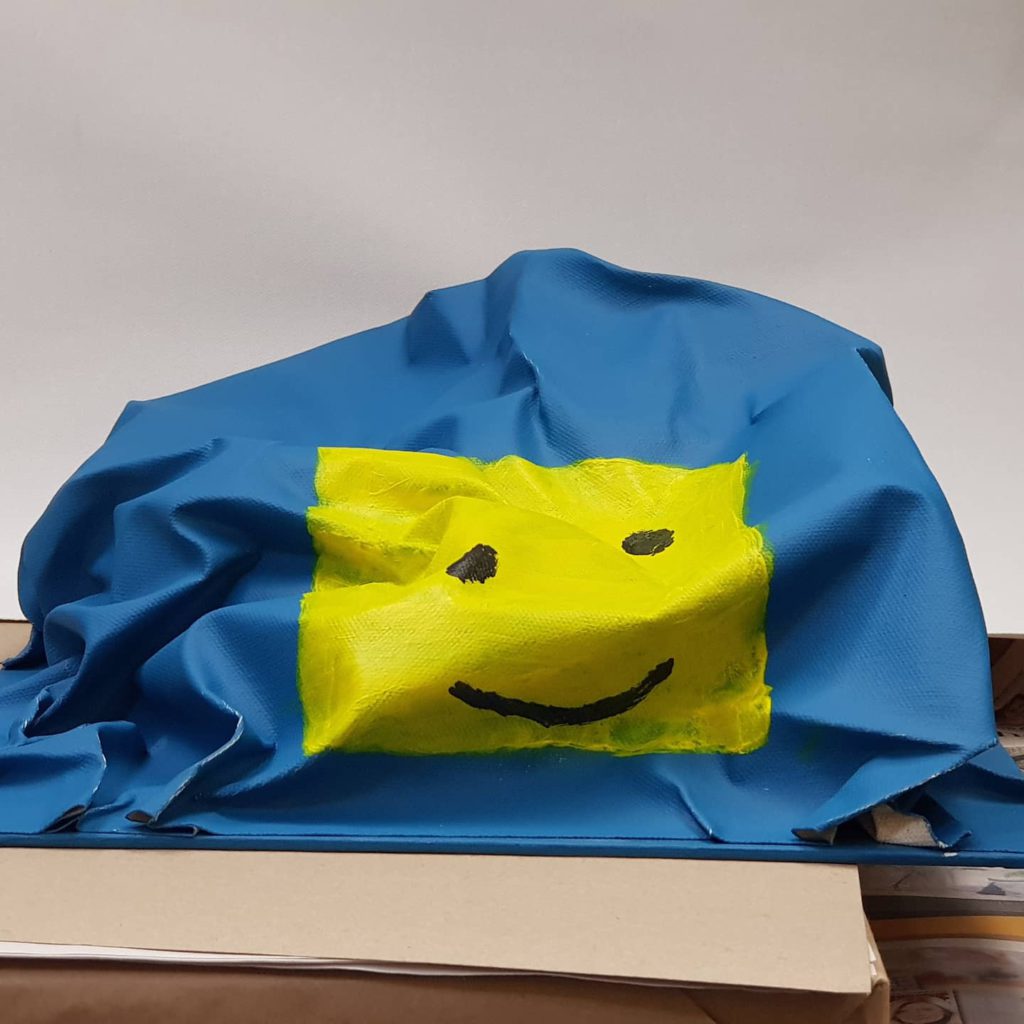
213.157 Independent Study Week #9.2
Wiki tua iwa, Akomanga tua rua
Task
Considering the works of Hanne Lippard (5) and Rebecca Ann Hobbs (6).
IND: Use the other artist’s method to produce your own work. Document both resulting works and archive into your workbook/blog
5th Artist: Hanne Lippard
That’s what I like about my practice—I can delve into other realms, I can find myself suddenly in a more music-oriented world or in literature and so on. I don’t think painters and sculptors can do it the same way, or as easily at least.
Glow, Tone. ‘Tone Glow 056: Hanne Lippard’. Tone Glow, 21 Mar. 2021, https://toneglow.substack.com/p/056-hanne-lippard.
Response
“Postmodernism” – an app
This app responds to speech, particularly the word “postmodernism”. You will need to give your web browser permission to use your microphone. If you click the app, it will play an audio clip of Hanne Lippard saying variations on “postmodernism”, and the app will react to that too (via your microphone hearing your speakers, for now). The audio clip is undoubtedly copyright Hanne Lippard, 2011.
Sourcecode
For those that care about this sort of thing, the program is written in P5JS and is hosted in my WordPress instance courtesy of the “Responsive P5JS for WP” plugin by Rolf van Gelder.
<html>
<head>
<meta charset="UTF-8">
<script language="javascript" type="text/javascript"
src="https://cdn.jsdelivr.net/npm/p5@1.4.0/lib/p5.min.js"></script>
<script language="javascript" type="text/javascript" src="https://cdn.jsdelivr.net/npm/p5@1.4.0/lib/addons/p5.sound.min.js"></script>
<script language="javascript" type="text/javascript" src="p5.speech.js"></script>
<script language="javascript" type="text/javascript" src="sketch.js"></script>
</head>
<body></body>
</html>var soundFile;
var myRec = new p5.SpeechRec('en-GB', parseResult);
myRec.continuous = true;
myRec.interimResults = true;
function preload() {
soundFile = loadSound('./Postisms.mp3');
}
function setup() {
// graphics stuff:
createCanvas(600, 200);
background(255, 255, 255);
fill(0, 0, 0, 255);
getAudioContext().suspend();
soundFile.play();
// instructions:
textSize(32);
textAlign(CENTER);
text("say something", width / 2, height / 2);
//myRec.onResult = showResult;
myRec.start();
}
function draw() {
// null (just uses a callback)
}
function parseResult() {
var mostrecentword = myRec.resultString.split(' ').pop();
if(mostrecentword.indexOf("postmodernism")!==-1) {
background(255, 0, 0);
} else {
background(192, 255, 192);
}
text(myRec.resultString, width / 2, height / 2);
console.log(myRec.resultString);
}
function mousePressed() {
userStartAudio();
}6th Artist: Rebecca Ann Hobbs
“I am completely preoccupied with music, dance and place at the moment, for example how do all things Dancehall, which originates in Jamaica, become manifest when the culture is practiced in a South Auckland locale?”
‘Rebecca Ann Hobbs’. CIRCUIT Artist Film and Video Aotearoa New Zealand, 12 Dec. 2011, https://www.circuit.org.nz/artist/rebecca-ann-hobbs.
Response
Did not complete this. Was making a video, took images of beach, was trying to sync them to a music track but the technology defeated me.
213.157 Independent Study Week #10.1
Wiki tekau, Akomanga tua tahi
Task
Considering the works of Mark Bradford (7) and Haegue Yang (8).
IND: Use the other artist’s method to produce your own work. Document both resulting works and archive into your workbook/blog
7th Artist: Mark Bradford
At the end of the day, I’m an artist. I may make work and decide to do something political, but it will come out of an artist’s position. It won’t come out of society telling me I have to. If I do, it’s because I choose, as an artist, to do it.
Response
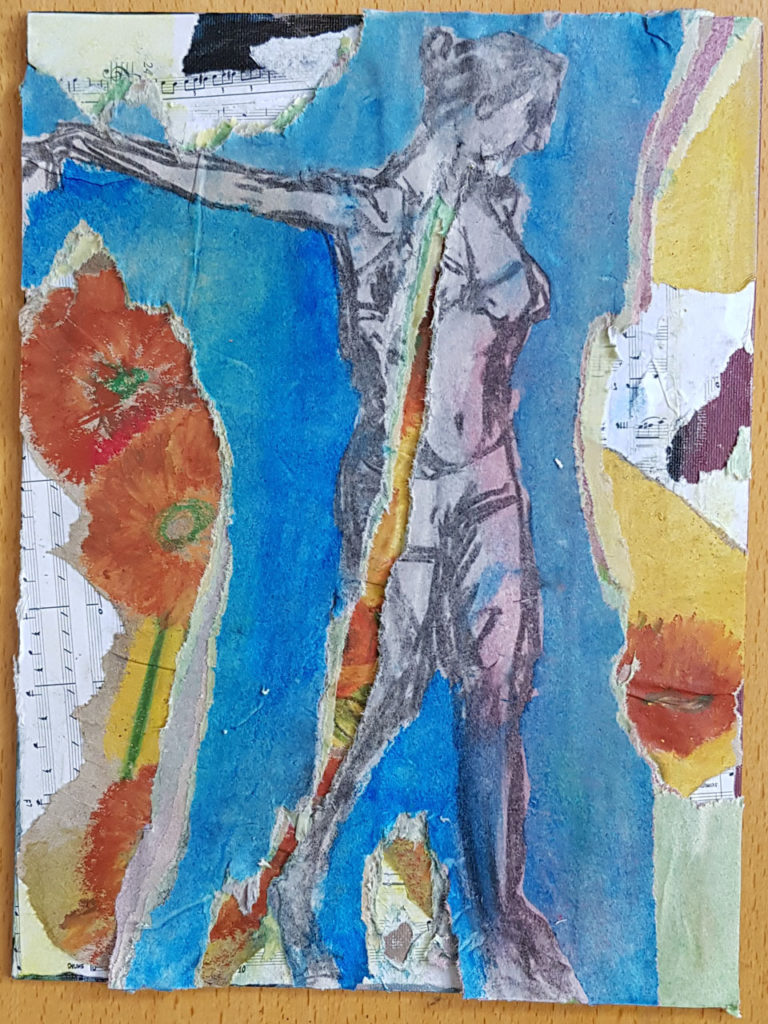
I approached this by looking at how Mark works with multiple layers of paper, incorporating found materials and in some cases recycling his own earlier work. Looking around, I decided to use/reuse the following:
- an unfinished painting of my own that I was never happy with as a base
- a collection of my charcoal/graphite life drawings on newsprint
- an unfinished oil pastel work
- some musical scores, rescued from the kindling bin
- some string
My inspiration was drawn from the life drawings being of the same subject, so potentially something that would make an interesting layer effect having a dance-like feel to them. I wanted to incorporate that, and use the string as Bradford does, to pull/cut through the layers of damp paper revealing underlying layers.
My intention was to place the string along the line of action of the figure, so that the disturbance created by its removal would create a strong feeling of movement in the final piece.
Below shows how I created the layers, with paint/glue between each layer of paper. As I progressed, I became uncomfortable that the string would be tearing through the body of the figure, which felt somehow abusive. However, I started pulling the strong through from the feet, and as it came up through the layers it eventually pulled free of the layers before it cut through the head of the figure. A happy accident, in other words.
8th Artist: Haegue Yang
I felt so exposed to nature and the local cultural and sacred landscapes. Sentimental, melancholic, even romantic feelings overwhelmed me – tough and rough, sometimes dangerous, as well as mystical.
Interview with Haegue Yang, Debika Ray, Crafts Council, December 2020
Response
I reviewed Yangs work at length, and decided that I would use the following pieces as references:
These are part of her “non-foldings” series of works:
http://heikejung.de/Non-Foldings%E2%80%93Geometries.html
After experiments with spraying into punctured tin cans and so on, I ended up using bottle caps and a piece of plastic tube as masks and templates to create this:
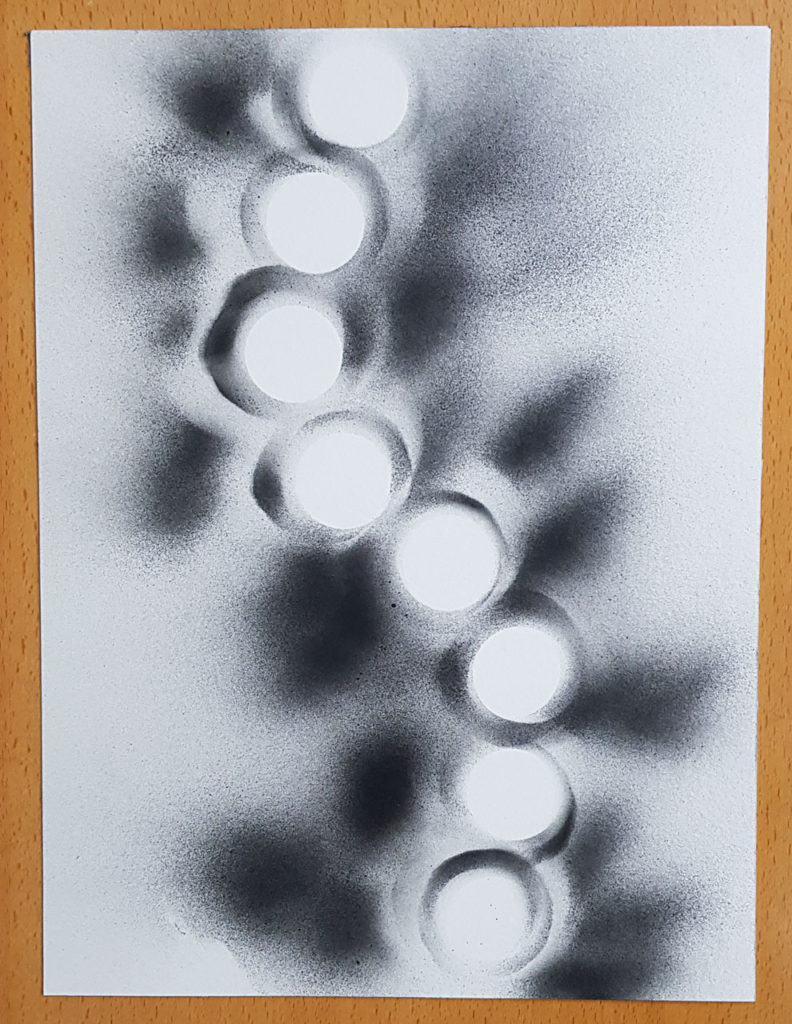
These are some of my initial experiments and setups, including a first attempt that’s interesting, but not really what I was looking for.
213.157 Independent Study Week #10.2 – FA
Formative Assessment
Preparatory Notes
What has worked for you? What was your best, or favorite, method?
Possibly Mark Bradford?
Deeply layered collage is a messy, fun thing to do and I can see it having interesting possibilities that I’m already thinking through.
I like the idea of using a string/rope to pull through layers of paper. I’m interested to try a more fine grained approach. Perhaps apply a layer of colour, add drawings of people on newsprint on top, then use thin strings to pull through them aligned to the limbs, so that you get a kind of sinewy effect? Worth trying.
How could these methods reflect aspects of hakari through the resulting artworks?
I quite like the richness and deliberate nature of this technique, although it is destructive in nature. Hakari can be partly about displaying wealth, almost in a gratuitous way.
Why?
As to hākari, I can see a link here. A feeling that I’m adding richness to a work that’s ultimately then something of a sacrifice.
Note: I’ve no idea why I’m making this connection, but it does remind me of some Native American blood rituals. It’s the tearing through of something as the final act in the process. Probably an old movie called A Man Called Horse, which is a mixed up mess of a thing with a white guy playing the Native American lead, the ritual aspects borrowed from the wrong tribe, and so on.
Notes taken by a peer
My own thoughts on the event
This was useful in refining my thinking. Very easy to get stuck in perfectionism and “analysis paralysis”, so one comment in particularly resonated with me, “low stakes”. The kind of work I’m doing is low stakes – worst case is I screw up a canvas and then gesso over it or reuse it elsewhere. The most I can ever “lose” at the level is a couple of dollars and some time.
Next Steps
How will you iterate on your earlier experiments to produce a final artwork? What research and further experimentation will be needed? How will you go about this?
While making in this way, I did have a number of things that I wasn’t entirely happy with, and also places where I wanted to try additional techniques:
- I did not have much control over what was exposed on underlying layers. I think with my next piece this should be more deliberate.
- Adding the string/rope back into the piece is what Bradford discussed in one of the interviews we watched. How might I do that?
213.157 Independent Study Week #11.1
Wiki tekau ma tahi, Akomanga tua tahi
Task
Visit exhibition and report (400 words using the template on STREAM) IND: Complete your review / report
Gallery Visit
213.157 Independent Study Week #11.2 – Plan
Task
Your plan should include consideration of the following questions: How will you iterate on your earlier experiments to produce a final artwork? What research and further experimentation will be needed? How will you go about this? (this plan will be a ‘living document’ that you can update in conversation with us over the next week).
Context

Ideas
Need to reflect on hākari – consideration of excess consumption? Environmental impacts of human consumption?
Concept based on some of Mark Bradford’s work with destruction of overlying layers.
Idea to perhaps use a more friable upper layer, for example plaster over an acrylic painted or oil pastel layer? Maybe a photograph printed at a large scale?
Add strings over the base image, or some other ways to disrupt the plaster layer?
Invite the audience to take part in the destruction of the upper layer?
As I want to bring an environmental theme into this, perhaps the lower layer can be a map? Roads and houses, with an aerial view of a forest and rivers painted on the plaster layer?
Perhaps the strings can follow the roads, train lines, etc.
Look at environmental imagery. Look for patterns, cycles, celebratory events (migrations?), and so on.
213.157 Independent Study Week #12.1
See “making of” photos on summative page:
213.157 Independent Study Week #12.2
See “making of” photos on summative page:















